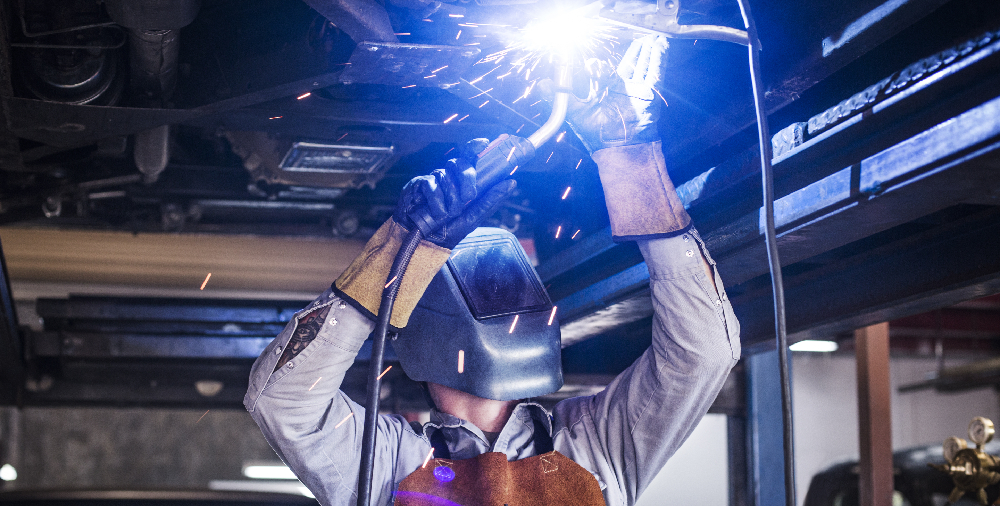When you’re thinking about upgrading your car, maybe you instantly picture a new engine, modified exhaust system, or a paint job. But when you’re making a modification you might not consider the most nitty gritty details, including whether or not you want MIG or TIG welding. Welding specifics are huge for DIYers, but it can be insightful to know more about the process happening to improve your vehicle. And if you, like most people, don’t know a lot about welding, we’re going to break it down for you gearheads in this article.
Welding: The Basics
Welding uses heat and pressure to join two separate pieces of material. There are different industry techniques depending on the specifications of the part and production. As welding has evolved, the process has been optimized through several techniques and technologies. These improvements include arc welding, friction welding, electron beam welding, laser welding, and resistance welding. As mentioned, two of the most common welding methods are MIG and TIG welding.
Difference between MIG and TIG Welding?
MIG, which stands for “metal inert gas,” welding is used for large and thick materials. It uses a consumable wire for the electrode and the filler material. TIG, which stands for “tungsten inert gas,” welding is more versatile. With TIG welding, you can join more small and thin materials. It also has a non-consumable tungsten electrode that heats the metal with or without a filler.
MIG welding is a very fast process, especially compared to TIG welding. Because of this, the TIG welding process results in longer lead times and greater production costs for material, shipping, and labor. It’s also easier to learn MIG welding, and there’s minimal cleaning and finishing for welds. On the other hand, TIG welding requires a highly specialized professional; there’s a great deal of training needed. Without it, a welding following the TIG process won’t achieve good precision and accuracy with their welds. Yet, you will have better control during the welding operation when you employ the TIG process, unlike what you’d find with MIG welding.
Welding with Your Vehicle
What does this have to do with your car? Well, technicians will use auto repair welding for a number of tasks, such as:
- Structural repair, like cracks
- Fabricate metal components
- Improve structural design and integrity
Clean and strong welds are essential to auto body work and a long-lasting, properly-running vehicle.
So, which one is best for your vehicle: MIG welding or TIG welding? As you may infer, it depends on the situation and your (or your technician’s) experience. MIG is great for repairs and alterations, considering the material is thick enough. Plus, it’s easier to learn so many DIYers can try their hand at it, with the right tools and safety. However, MIG welding is messier, which means you’ll want to invest considerable time in the clean up.
TIG welding works best with aluminum, such as aluminum pipes for turbo intercooling. As mentioned, though, you’ll need to be very trained with the TIG technique to have the result you want on your vehicle. There’s less heat with TIG, so less distortion too with your welds.
Of course, we first and foremost recommend professional advice or consultation before any welds. You’ll want to ensure that you and your vehicle are safe throughout the process.
Performance Muffler: Only Real Car Lovers Can Get The Job Done!
Performance Muffler is proud to call itself a top shop for custom exhaust work in the Phoenix area since 2007. Our countless, satisfied customers praise us for our passion and expertise when it comes to handling their vehicles. Browse our website or blog to understand more of the Performance Muffler difference.
Want to Transform Your Vehicle? Contact Us for a Free Quote
Looking to improve or modify your ride? Trust the professionals and know you’re getting the best service possible. Contact the Performance Muffler team today for a free quote.

